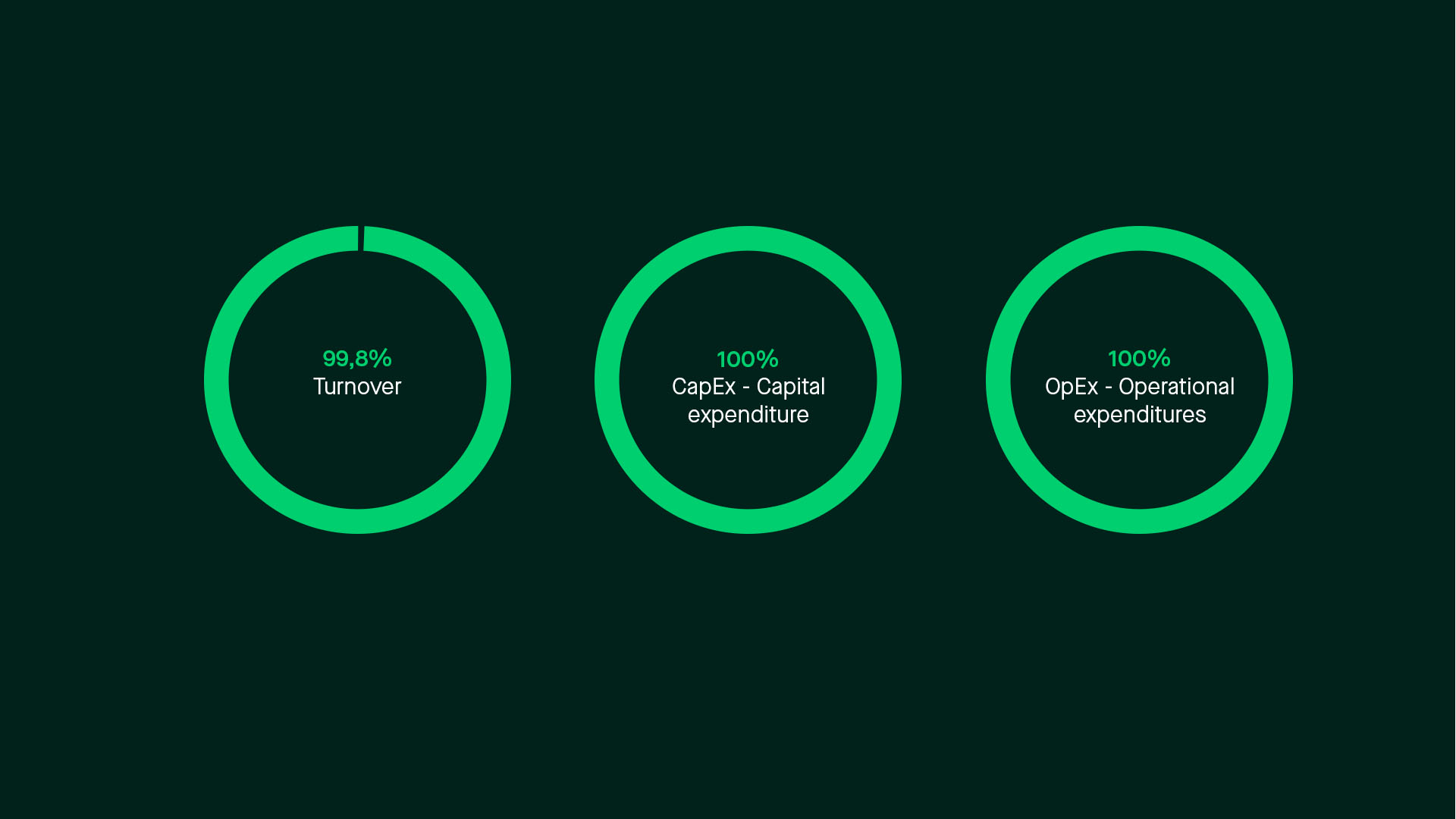
The EU Taxonomy Regulation is an important part of the EU action plan to shift capital flows towards a more sustainable economy and marks an important step towards the goal of achieving climate neutrality by 2050.
Statnett’s activity is taxonomy-eligible, and we have assessed that all our operations relate to the energy sector; activity 4.9 Transmission and distribution of electricity.
Statnetts activity contributes to following climate goals
For Statnett's activity to be defined as sustainable, it must meet several requirements.
The activity is sustainable when it makes a substantial contribution to one of the six objectives above, and when it does not have a significant negative impact on the remaining five objectives (Do no significant harm, DNSH). In addition, the activity must meet minimum requirements for social and governance aspects.
We have assessed that Statnett’s activity 4.9 in the taxonomy meets the criterion of making a “substantial contribution” to the climate and environmental objectives: “climate change mitigation” (CCM) and “climate change adaptation” (CCA). The interconnected European power system makes a substantial contribution to the green transition.
A well-integrated energy market and energy system are fundamental prerequisites for achieving Europe’s energy and climate targets in a cost-effective manner. Furthermore, our assessment is that our activity has no significant negative impact on the other objectives, and we comply with the minimum safeguards criteria for social and governance aspects.
Statnetts assessment
See the table below for our assessment related to impacts on the five other environmental objectives.
|
Environmental objectives |
Our assessment of the DNSH criteria for activity 4.9 in the taxonomy |
|
Climate change adaptation |
Statnett has identified physical climate risk and conducted vulnerability assessments that are material to our activities. We have also implemented actions where material risks have been identified. The assessments show that our facilities, depending on where in the country they are located, will experience increased, reduced or unchanged climate impact. Guidelines for choosing routes and technical solutions are used to calculate climate loads. All new facilities are designed to withstand extreme weather events. Our assessments are based on the report “The importance of climate change for Statnett’s transmission facilities” and the regional projections made by the Norwegian Centre for Climate Services. Read more in Chapter ESRS 2 in the Sustainability report. |
|
The sustainable use and protection of water and marine resources |
No criteria for water have been prepared in relation to activity 4.9. |
|
Transition to a circular economy |
The waste hierarchy forms the basis for Statnett’s waste management. The planning, construction, operation and demolition of buildings and facilities should be conducted in such a manner as to ensure the least amount of negative impact on natural resources and the external environment. This means that waste should be reduced and materials reused before they are recycled into new materials or energy. In Norway, there are legal requirements for waste management. Statnett carefully plans waste management to facilitate the sorting at source of various components, and we ensure maximum utilisation of material resources or energy resources. The requirements for hazardous waste are particularly stringent. Statnett has a framework agreement for waste management. Read more about Statnett’s resource use in Chapter E5 of the Sustainability report. |
|
Pollution prevention and control |
Systematic HSE work and internal control are legal requirements in Norway. Statnett adopts a structured and targeted approach to HSE, meeting the requirements of the Internal Control Regulations and the Construction Client Regulations. Our systematic HSE work is based on the risk factors to which our various activities are exposed. Statnett considers that itsHSE work complies with the IFC’s general guidelines for environment, health and safety. We follow strict requirements to limit the impacts of electromagnetic radiation on people as set out in Norwegian legislation, the provisions of the Radiation Protection Regulations and the authorities’ advice on caution and good practice. Statnett does not use power conduits that contain PCB. Read more about how Statnett prevents and manages pollution in Chapter E2 in the Sustainability report. |
|
Protection and restoration of biodiversity and ecosystems |
The Regulations on Impact Assessments require enterprises to carry out impact assessments when planning new power transmission facilities. Construction of grid facilities must also conform with a number of land use laws and regulations. We carry out impact assessments in accordance with Directive 2011/92/EU, as implemented through the Norwegian Regulations on Impact Assessments. Statnett uses the mitigation hierarchy as a basis for planning new power transmission facilities. If an impact on a biodiversity asset cannot be avoided, Statnett strives to minimise the impact by implementing remedial actions. Statnett has infrastructure in vulnerable and valuable natural areas, with varying levels of impact on different types of nature. Where Statnett is in contact with such natural areas, Norwegian legislation is particularly strict on assessing impact, compliance with the mitigation hierarchy and implementation of remedial actions. Statnett aims to avoid the degradation of such areas. Read more about our approach to nature in Chapter E4 in the Sustainability report. |
|
Climate change mitigation |
Statnett’s infrastructure is not dedicated to establishing a direct connection or expanding an existing direct connection to electricity production with greenhouse gas emissions exceeding 270 g CO2e/kWh. |
See Statnett's Annual and Sustainability report for 2024 for our full Taxonomy report.

